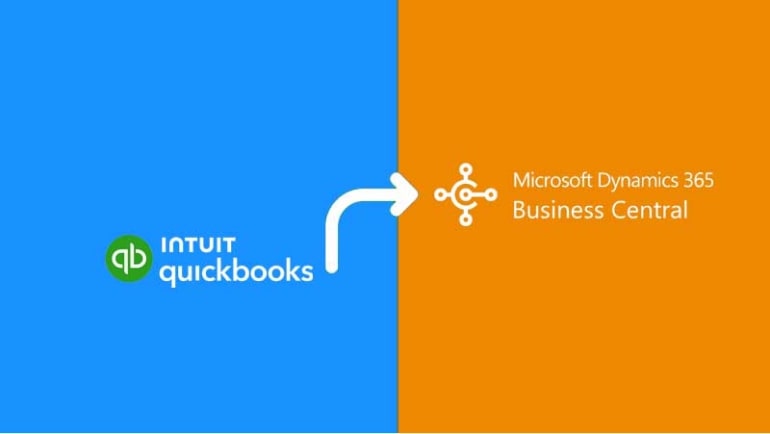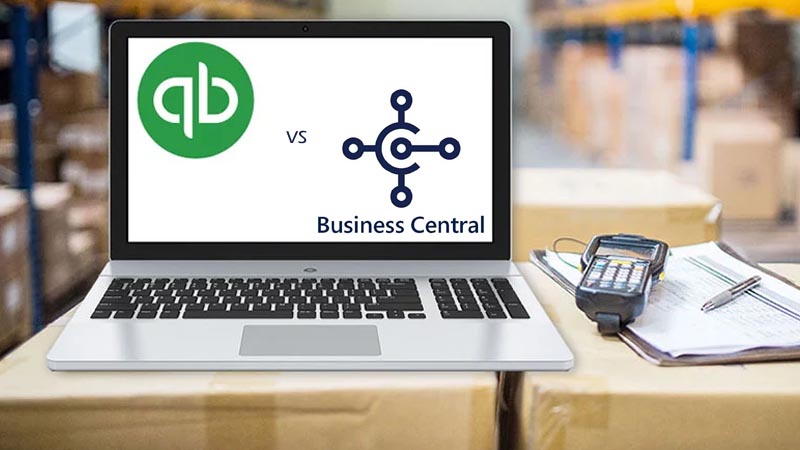How QuickBooks to Dynamics 365 Business Central Migration helps Distributors to Manage Inventory?
The majority of distributors are under pressure to digitally adapt. Distributors create a large amount of data about inventory, such as total stock available, demand from sales, estimated vendor receipts, and cost. Manually entering data into the system or transferring data can cause a lack of communication that might lead to inventory data errors and delays. Transformation is on the way, whether it’s changing the way you sell, such as through digital platforms like Walmart, Amazon, Costco, and others or looking into cloud-based solutions to keep your different warehouses connected.
Quickbooks to Dynamics 365 Business Central migration is becoming increasingly popular among distributors, since the software struggles to maintain all the data as the company grows, managing more inventory, and generating more data. QuickBooks has brought you this far, but Dynamics 365 Business Central can take you even further. QuickBooks’ heterogeneous systems and silos do not support business intelligence and cannot provide the strategic insights you require. This issue is addressed by Microsoft Business Central integrated powerful business analytics and data visualization tool that helps you bridge the data-to-decision-making gap. Take a look at how transitioning from QuickBooks to Dynamics 365 Business Central will help you realign your stock, manage procedures, remove data silos, and improve real-time inventory traceability across many locations.
With Dynamics 365 Business Central, you can get real-time data
For real-time inventory tracking and management across locations, Dynamics 365 Business Central provides powerful inventory management tools and a built-in warehouse management system (WMS) with advanced levels of communication, system integration, and automation. Transactions automatically raise and decrease inventory records because data flows easily across the system. You can simply track inventory transfers between warehouses, examine all orders at a glance, route orders to the appropriate facilities, and keep track of inventory counts at each site.
What’s different about Business Central
With Dynamics 365 Business Central, all of your data is centralized and simply and automatically shared between departments and locations. With little effort on your part, your inventory data is aggregated into a single solution. It also removes manual exports and imports while maintaining data integrity and correctness. It demonstrates that more precise data leads to proper analytics, allowing you to get real-time images of your inventories and costs. In the operational wheel, each data point represents a major expense. Even though QuickBooks appears to be capable of handling your inventory management – and the data it generates are like Excel spreadsheets, it will fall short when it comes to sustaining your development.
Inventory tracking and tracing across many warehouse locations
The QuickBooks inventory system isn’t designed to track serialized or lot-controlled goods, and it can’t communicate with other warehouses or businesses. Business Central, on the other hand, has comprehensive inventory management features as well as an integrated warehouse management system. This allows you to simply track inventory transfers between warehouses, see all orders at a glance, route orders to the appropriate facilities, and keep track of inventory counts at each site. If your system isn’t handling real-time inventory in one or several locations, you risk losing track of goods, which could result in lost sales and money as your distribution firm grows. QuickBooks is unable to maintain track of serialized or lot-controlled inventory, nor can it communicate across your various warehouses or companies.
Make better choices
QuickBooks to Dynamics 365 Business Central Migration is about more than just optimizing inventory and accounting procedures. It’s all about linking and enhancing numerous processes in your company so you can see your warehouse operations better. Furthermore, it empowers your employees to make better business decisions. It’s about connecting and streamlining a number of processes in your online business to provide you higher visibility into your warehouse operations. As well as, it allows your folks to make smarter selections in your online business, and to think out of the box with the help of these invaluable tools.
When you are provided with this kind of access, it helps you make real-time purchasing decisions that maintain your inventory availability high and costs low, not just for your inventory but for your entire organization. You’re probably feeling the push to digitally transition as a distributor, and any transition requires your accounting staff to use QuickBooks to its full potential. Because of this, many distributors are tackling their inventory monitoring challenges with QuickBooks to Dynamics 365 Business Central migrations, since QuickBooks and Excel do not connect with other company systems, data must be manually entered into the system or transferred.
Dynamics 365 Business Central vs QuickBooks
In both methods of data entry however, there is minimal to no automation. Depending on people to enter and maintain all data leads to duplication, inaccuracies, and significant compliance issues, which can cause major difficulties during audit time. Not to mention the lost productivity when employees must manually enter and track data for hours. All of your data is centralized in Dynamics 365 Business Central and can be transferred quickly and automatically between departments and locations. More precise data implies more precise analytics, allowing you to see a more accurate picture of your inventories and costs.
There is no straightforward way to correlate sales data to operational data in QuickBooks, or to manage project expenses based on resources, for example. That’s where Dynamics 365 Business Central solution, offering you superior insight throughout your entire organization will play an instrumental role. Any data source, including Business Central financial, inventory, and operational data, sales and marketing data from your customer relationship management (CRM) system, and Microsoft Office apps like Outlook and Excel, can be connected. You can make real-time purchasing decisions that maintain inventory availability high and costs low when you have that level of visibility over not only your inventory but your entire organization. It’s no wonder many companies are taking the decision to move to Microsoft Dynamics 365 Business Central for effective and result-oriented inventory management and control.
Ready to move from QuickBooks to Dynamics 365 Business Central? You are a step away – Let’s discuss.




